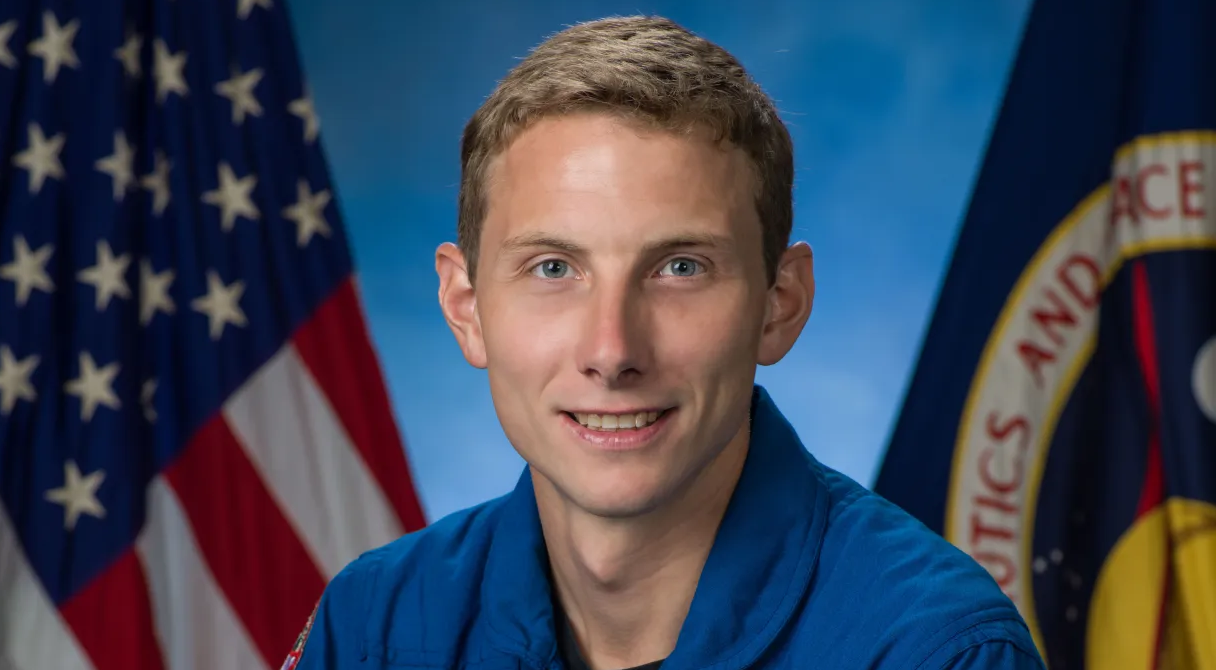Warren “Woody” Hoburg was selected by NASA to join the 2017 Astronaut Candidate Class, at which time he was an Assistant Professor of Aeronautics and Astronautics at MIT and an instructor for MIT xPRO’s online four-course Systems Engineering certificate program.
We’re immensely proud of Woody’s ascent to full NASA astronaut status and have been watching his space journey (which began on March 3, 2023) closely! Check out his bio video, and for first-hand photos and videos of his extraterrestrial adventures, be sure to visit his Instagram.
Before joining NASA, Woody developed materials for Course 2 of MIT xPRO’s Systems Engineering program, Models in Engineering, which gives learners a comprehensive understanding of practical and conceptual modeling considerations. (Because this course is offered entirely online, learners can still access Woody’s materials and teachings while he’s in space!)
Dr. Bruce Cameron, the current lead instructor for the program, worked closely with Woody. We asked him for his insights on why systems engineering is important in aerospace and why Woody’s involvement in the course was crucial.
Why Systems Engineering Is Important in Aerospace
Dr. Cameron explained that systems engineering originated in the aerospace industry, where small problems tend to lead to much bigger problems.
In aerospace, vehicles are sensitive to weight and must be strategically optimized for weight reduction. There is also a significant emphasis on safety due to the high-risk nature of these applications. In the satellite sector, satellites must function correctly from the outset because the cost of repairing them once they have launched is prohibitively high.
Systems engineering is used to methodically define system objectives before considering solutions, allocate tasks to meet those objectives, and ensure that every part of the system achieves its specific goals.
The SpaceX example
When asked for an example of how systems engineering has led to the success of an aerospace project, Dr. Cameron immediately mentioned SpaceX’s rocket that was designed to land back at the pad. “They built this phenomenal technology to have the rocket fly itself back to the landing pad,” Dr. Cameron explained. “The reason that’s so pivotal is that they found a way to significantly reduce costs by being able to reuse the hardware instead of having it land in the ocean to sink or be recovered and scrapped.”
SpaceX tried and failed over many attempts to bring that technology to fruition. The company used systems engineering to consider the factors that would make the technology a success, such as the timing of firing the rocket, the aerodynamic devices on the sides of the rocket, and the trajectory planning that those devices would work in conjunction with.
What to Expect from MIT xPRO’s Systems Engineering Program
MIT xPRO’s Systems Engineering program comprises four courses spanning approximately six months. “The courses are centered on model-based systems engineering. That’s essentially the modern reinvention of systems engineering focused on transitioning from the document-centric world of test sheets and Word files of requirements to using databases and shared models,” Dr. Cameron explained.
“Rather than starting with the language of model-based systems engineering, we work backward from posing the question: ‘What are the decisions you want to make using a model or systems engineering?’”
The courses are broken down into the following:
- Architecture of Complex Systems
- Models in Engineering
- Model-Based Systems Engineering
- Quantitative Methods in Systems Engineering
Woody Hoburg: optimization expert
According to Dr. Cameron, Woody is a true optimization expert, and he brought that expertise to the program—particularly in Course 2. “Optimization is essentially a layer we run on top of many models,” Dr. Cameron explained. “If I have a model that describes how a system performs, then I can run an optimization on top of it to determine, for example, the minimum viable weight for the system to still perform all its necessary functions.”
Woody was an MIT faculty member for two years after earning his PhD in electrical engineering and computer science at Berkeley and spending a couple of years at Boeing. “He really participated from the perspective of somebody who had built very detailed models before and was already a well-known expert in optimization,” said Dr. Cameron.
The Balloon Experiment
One of Woody’s most significant contributions at MIT was participating in the balloon experiment, known as “a favorite most-hated project” in the Systems Engineering program.
“The broad purpose of the balloon experiment was to show that you can build models at very different levels of granularity,” Dr. Cameron explained. “You can build a simple model sketched on the back of a napkin, and it might take an hour to code up. You can build a model that takes three people six months to complete. One of the challenges with modeling is you don’t know when to stop. You keep pouring effort into it, hoping it’s going to get better. So we wanted to explore that concept on the front end.”
Woody and Professor Olivier de Weck conducted the balloon experiment in MIT’s iconic Lobby 7, a four-story atrium built in 1916. They filled a balloon with helium and released the balloon from the ground floor, timing the ascent to the ceiling. Using that experiment as their baseline, students were encouraged to examine different models with increasing levels of detail.
The simplest model didn’t account for factors like the balloon dragging or wavering on its ascent. Instead, it assumed that the balloon would simply accelerate as it rose. Students would then compare the answer from the simple model to the test and be given a sense of the error bar on the simple model.
In two subsequent iterations of the model, students added details, accounting for how factors like aerodynamic drag and the balloon’s path could impact speed.
From Modelling Balloon Rise Time to Joining NASA’s Artemis Mission
It’s been a true privilege following Woody’s incredible adventures in space. We’re honored to have such wonderful memories of his time here with us at MIT.
Many learners who participate in MIT xPRO’s Systems Engineering certificate program go on to follow their own inspiring journeys to success. If you’re interested in learning more about the program, we encourage you to check it out!





